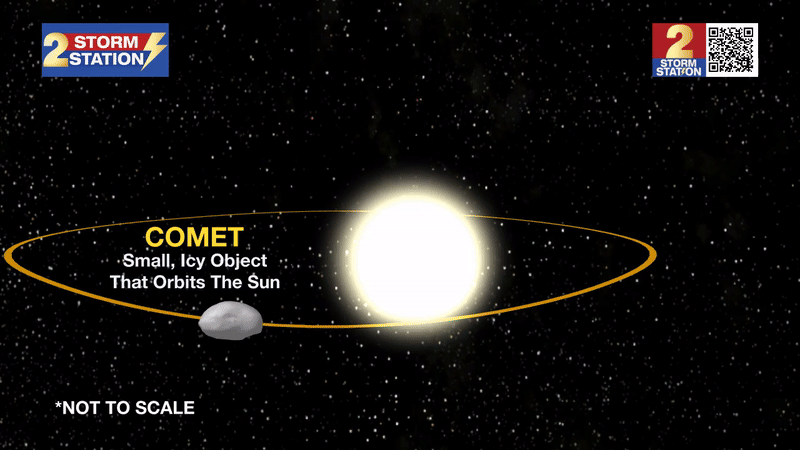A comet will be visible in capital area skies, won't be seen again for 80,000 years
The capital region will have an opportunity to see an uncommon astronomical sight this month. A comet will be visible in the night sky. Keep reading to find out when it can be seen in the Baton Rouge area.
On January 9, 2023, something orbiting the Sun was discovered at the Purple Mountain (Tsuchinshan) Observatory in China. The object was initially thought to be an asteroid. But on February 22, 2023, the Asteroid Terrestrial-Impact Last Alert System (ATLAS) program located in South Africa independently located and confirmed the object as a comet.
Both comets and asteroids orbit the Sun and are smaller than planets. However, asteroids are made up of metals and rocky material whereas comets are composed of ice, dust, and rock. Simply put by NASA, “asteroids are rocky, comets are icy….”
The new comet is named Tsuchinshan-ATLAS after its discoverers, and it may make an appearance in capital area skies for the second half of October. Chances of spotting the comet improve starting October 13, 2024.
Look west 30-60 minutes after sunset for a fuzzy-looking smudge with a tail – that’s the comet. Looking through binoculars or a small telescope is ideal as it will enhance the view, but it might be visible with the naked eye on clear evenings.
Comet Tsuchinshan-ATLAS will appear higher in the sky and set later in the night as it pulls away closer to the end of the month. The best time to observe will be an hour after sunset until the comet sets:
• Oct. 13 - Sunset: 6:35 p.m. | Comet Set: 8:13 p.m.
Trending News
• Oct. 14 - Sunset: 6:34 p.m. | Comet Set: 8:32 p.m.
• Oct. 15 - Sunset: 6:32 p.m. | Comet Set: 8:50 p.m.
• Oct. 16 - Sunset: 6:31 p.m. | Comet Set: 9:06 p.m.
• Oct. 17 - Sunset: 6:30 p.m. | Comet Set: 9:20 p.m.
• Oct. 18 - Sunset: 6:29 p.m. | Comet Set: 9:32 p.m.
• Oct. 19 - Sunset: 6:28 p.m. | Comet Set: 9:43 p.m.
• Oct. 20 - Sunset: 6:27 p.m. | Comet Set: 9:53 p.m.
• Oct. 21 - Sunset: 6:26 p.m. | Comet Set: 10:01 p.m.
• Oct. 22 - Sunset: 6:25 p.m. | Comet Set: 10:08 p.m.
If you see Tsuchinshan-ATLAS, the Storm Station would love to see your photos and video. Send them in through the Storm Station Weather App, or email them to weather@wbrz.com.
Most objects orbiting the Sun don’t do so in a perfect circle. Orbits tend to be stretched out, forming the shape of an ellipse. This means that planets, asteroids, and even comets hit points that are slightly farther away and closer to the Sun. The closer point is referred to as Perihelion, and comets get their classic appearance as this point is reached.
As a comet draws closer to the Sun, it gets blasted by a highly energized stream charged particles known as the solar wind. This produces a tail of gas and dust directed away from the Sun.

Many comets do not survive a close encounter with the Sun. But Tsuchinshan-ATLAS held together as it reached Perihelion on September 27, 2024. This bodes well for stargazers hoping to catch a glimpse.
The Storm Station is here for you, on every platform. Your weather updates can be found on News 2, wbrz.com, and the WBRZ WX App on your Apple or Android device. Follow WBRZ Weather on Facebook and Twitter for even more weather updates while you are on the go.


